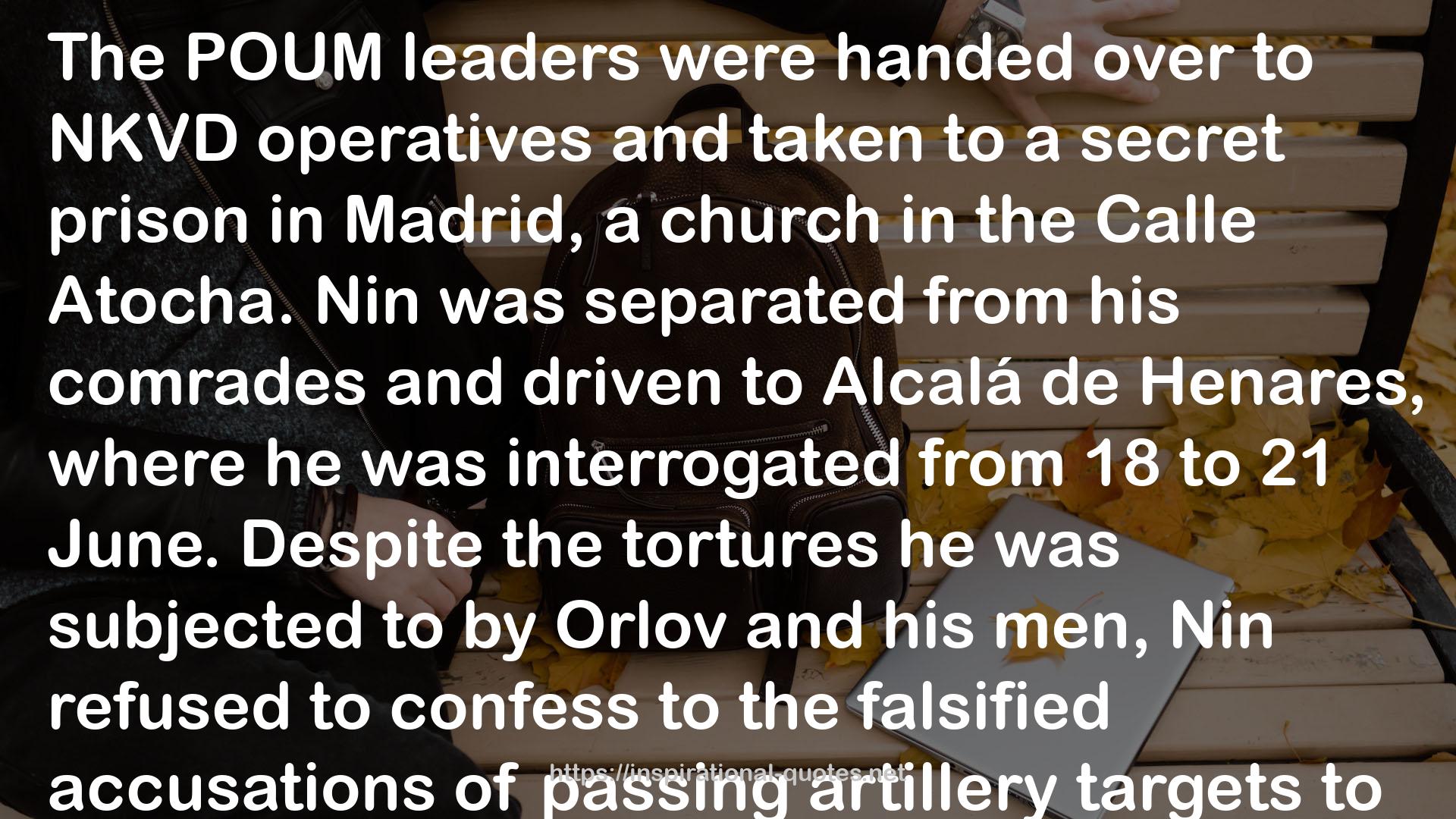" The POUM leaders were handed over to NKVD operatives and taken to a secret prison in Madrid, a church in the Calle Atocha. Nin was separated from his comrades and driven to Alcalá de Henares, where he was interrogated from 18 to 21 June. Despite the tortures he was subjected to by Orlov and his men, Nin refused to confess to the falsified accusations of passing artillery targets to the enemy. He was then moved to a summer house outside the city which belonged to Constancia de la Mora, the wife of Hidalgo de Cisneros and tortured to death. A grotesque example of Stalinist play-acting then took place. A group of German volunteers from the International Brigades in uniforms without insignia, pretending to be members of the Gestapo, charged into the house to make it look as if they had come to Nin’s rescue. ‘Evidence’ of their presence was then planted, including German documents, Falangist badges and nationalist banknotes. Nin, after being killed by Orlov’s men, was buried in the vicinity. When graffiti appeared on walls demanding ‘Where is Nin?’ communists would scribble underneath ‘In Salamanca or in Berlin’. The official Party line, published in Mundo Obrero, claimed that Nin had been liberated by Falangists and was in Burgos. "
― Antony Beevor , The Battle for Spain: The Spanish Civil War 1936-1939
